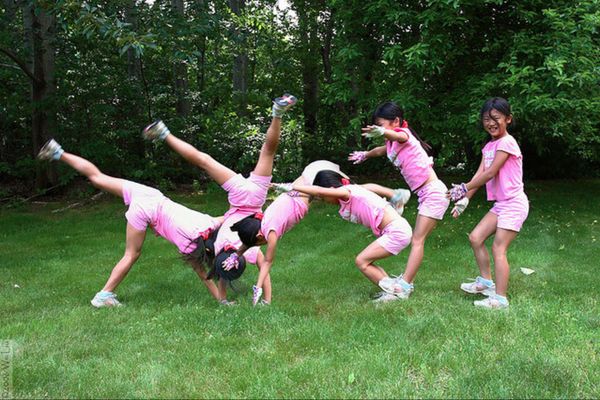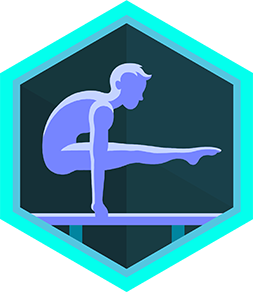Master a roundoff
Learn and practice a roundoff by warming up, using a mat and spotter, and breaking the skill into steps for safe gymnastics progress.



Step-by-step guide to master a roundoff
How to do a Gymnastics Roundoff
Step 1
Clear a safe open space and lay your gymnastics mat flat.
Step 2
Do 2 minutes of light cardio like jogging in place to warm up your body.
Step 3
Warm up your wrists by doing gentle wrist circles for one minute.
Step 4
Stretch your hamstrings and calves with a standing forward fold for 30 seconds.
Step 5
Practice kicking up to a handstand against a wall three times to feel your shoulders and balance.
Step 6
Do three strong cartwheels focusing on straight arms and stepping out with your feet.
Step 7
Do three cartwheels where you pause briefly in a handstand shape to practice the upside-down position.
Step 8
Have your trained spotter stand at your hips and get ready to guide you.
Step 9
With your spotter supporting your hips, kick up and let them help you snap your legs down to your feet three times.
Step 10
Practice a roundoff onto your knees or a folded mat three times to build confidence and control.
Step 11
Try up to five unassisted roundoffs on the mat with short rests between attempts.
Step 12
Cool down by doing gentle back and leg stretches for one minute and drink some water.
Step 13
Share your finished roundoff progress on DIY.org so others can see what you learned.
Final steps
You're almost there! Complete all the steps, bring your creation to life, post it, and conquer the challenge!


Help!?
What can we use if we don't have a gymnastics mat or a trained spotter?
If you don't have a gymnastics mat, stack firm yoga mats or folded blankets on the floor and if you lack a trained spotter, have a trusted adult stand at your hips or use the wall progression (kick up to a handstand against a wall) for extra support.
I'm struggling to snap my legs down with my spotter or keep balance when kicking up—what should I try?
If the snap-down or balance fails, repeat the cartwheel drills and the three assisted kicks with your spotter supporting your hips, practice the three handstand-pausing cartwheels to feel upside-down, and use the folded mat/kneeling roundoff drill to build control before full attempts.
How can I adapt this sequence for younger children or advanced teens?
For younger kids, reduce the cardio, focus on wrist and hamstring stretches, and replace unassisted roundoffs with practice onto knees and more spotter-guided kicks, while advanced teens can increase warm-up time, add extra repetitions of unassisted roundoffs, and move toward faster progressions after the three assisted snaps.
How can we extend or personalize the activity once the child can do a roundoff?
To extend the activity, film attempts to review and share on DIY.org, set goals like five clean unassisted roundoffs in a row, add tape targets on the mat to improve foot placement, or progress toward a roundoff-to-back-handspring with coach supervision.
Watch videos on how to master a roundoff
How to do a ROUNDOFF at home! MGA Gymnastics
Facts about gymnastics for kids
🔥 A 10–15 minute warm-up raises muscle temperature and joint mobility, making skills like the roundoff safer and easier.
👥 A spotter guides your body through the motion, helps prevent falls, and speeds up learning when used correctly.
🧠 Coaches teach roundoffs using progressions—breaking the skill into hands, hips, and snap drills helps build strength and technique.
🧰 Practicing on a padded mat cushions landings and helps beginners try moves with more confidence and less pain.
🤸♀️ A roundoff is like a cartwheel with a powerful snap that turns you 180° so you can launch into a run or flip.
How do you teach a child to master a roundoff?
What materials and equipment do I need to practice a roundoff safely?
What ages and skill levels are suitable for learning a roundoff?
What are the benefits and safety tips for practicing roundoffs?


One subscription, many ways to play and learn.
Only $6.99 after trial. No credit card required


